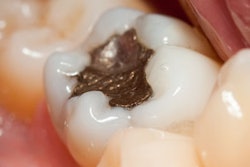
The U.S. Environmental Protection Agency (EPA) has finalized standards to reduce the discharge of mercury and other metals in wastewater from dental practices into municipal sewage treatment plants. While the rule will go into effect soon, the compliance date for most practices is not until the end of 2019.
The EPA noted that these regulations don't apply to many offices and were based on water treatment practices recommended by the ADA. The agency believes the rules won't be an unnecessary burden on practices; for example, a requirement to use amalgam separators would have an annual cost per practice of approximately $800.
"EPA has concluded that requiring dental offices to remove mercury through relatively low-cost and readily available amalgam separators and [best management standards] makes sense," the EPA stated in its executive summary of the final rule.
Regulation specifics
More than 100,000 practices in the U.S. use or remove amalgam, according to the EPA. About 5.1 tons of mercury each year is discharged through wastewater lines to municipal treatment plants from these offices, and it is subsequently released into the environment. Dental offices are the main source of mercury discharge to these municipal treatment plants, the agency noted.
The regulations will require that a facility that places or removes amalgam will be subject to two best management practices:
- Collect and recycle scrap amalgam.
- Clean the chairside traps with nonbleach or nonchlorine cleanser so as not to release mercury.
The EPA ruling also requires practices to install an amalgam separator that meets certain requirements, if they don't already have one, or replace the separator they have with equipment that does meet the requirements within 10 years. The amalgam separator must be compliant with either the American National Standards Institute (ANSI) American National Standard/ADA Specification No. 108 for Amalgam Separators (2009) with Technical Addendum (2011) or the International Organization for Standardization (ISO) 11143 Standard (2008), or subsequent versions so long as that version requires amalgam separators to achieve at least a 95% removal efficiency.
The new rules apply to dental offices, dental schools, and clinics that discharge water to a municipal treatment plan. The EPA noted these regulations do not apply to mobile units or offices where the practice "consists only" of the following specialties:
- Oral pathology
- Oral and maxillofacial radiology
- Oral and maxillofacial surgery
- Orthodontics
- Periodontics
- Prosthodontics
Dental offices must also submit a compliance report and have maintenance and inspection records available.
Organized dentistry reaction
“We believe this new rule -- which is a federal standard -- is preferable to a patchwork of rules and regulations across various states and localities.”
The EPA regulations represent a "fair and reasonable approach" to dental amalgam waste management, according to the ADA.
ADA President Gary Roberts, DDS, noted that one regulation that applied to the entire U.S. was preferable to different regulations in different states.
"We believe this new rule -- which is a federal standard -- is preferable to a patchwork of rules and regulations across various states and localities," said Dr. Roberts in an ADA statement.
The California Dental Association (CDA), in a statement to DrBicuspid.com, said it had worked with the ADA to advocate for revisions to the proposed rule.
"The EPA’s final rule reflects this request, and CDA believes the new requirement is a practical way for dental offices to control amalgam waste,” the association stated.
The new regulations can be found on the EPA website.



















